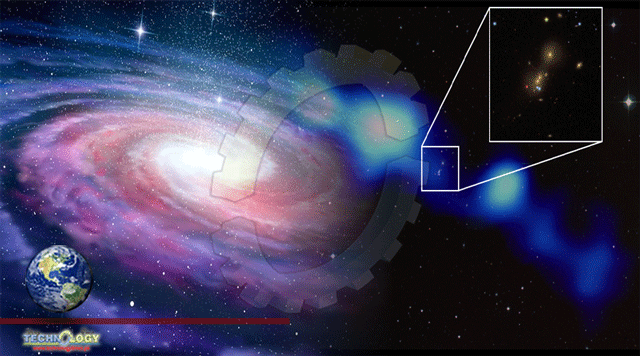Using data from the Low Frequency Array (LOFAR), a radio telescope that operates at frequencies between 10 and 240 MHz and consists of 52 stations spread throughout Europe, astronomers have observed the radio galaxy 4C 43.15, the quasar 3C 293 and the supergiant elliptical galaxies Hercules A as well as gravitational lenses MG 0751+2716 and CLASS B1600+434.

The Universe is awash with electromagnetic radiation, of which visible light comprises just the tiniest slice.
From short-wavelength gamma rays and X-rays, to long-wavelength microwave and radio waves, each part of the light spectrum reveals something unique about the Universe.
The LOFAR network captures images at FM radio frequencies that, unlike shorter wavelength sources like visible light, are not blocked by the clouds of dust and gas that can cover astronomical objects.
Regions of space that seem dark to our eyes, actually burn brightly in radio waves, allowing astronomers to peer into star-forming regions or into the heart of galaxies themselves.
The new images from the LOFAR telescope network push the boundaries of what astronomers know about galaxies and super-massive black holes.
They reveal the inner workings of nearby and distant galaxies at a resolution 20 times sharper than typical LOFAR images.
“We are now able to investigate the small-scale structure of radio jets at low frequencies, something that just wasn’t possible before the LOFAR international baselines became available,” said Dr. Jeremy Harwood, an astronomer at the University of Hertfordshire.
“This is a significant step forward in understanding how these jets and the galaxies that host them evolve over cosmic time and how the Universe came to be the way we observe it today.”
The relative ease of the experience for the end user belies the complexity of the computational challenge that makes each LOFAR image possible.
To produce a single image, more than 13 Terabits of raw data per second must be digitized, transported to a central processor, and then combined.
“To process such immense data volumes we have to use supercomputers,” said Dr. Frits Sweijen, an astronomer at Leiden University.
“These allow us to transform the terabytes of information from these antennas into just a few gigabytes of science-ready data, in only a couple of days.”
originally by SciNews